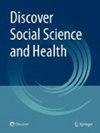贝宁学龄青少年中的多重性伙伴关系:一项基于人群的患病率和预测因素研究
引用次数: 0
摘要
摘要目的调查在校青少年多重性伙伴关系的发生率及其影响因素。方法对2016年全球校本学生健康调查(GSHS)数据进行二次分析,确定贝宁2496名13-17岁学龄青少年的多个性伴侣患病率及其影响因素。结果青少年多重性伴侣总体患病率为26.1%。在调整其他因素后,男性(AOR = 4.80, 95% CI 3.78-6.09)、旷学(AOR = 1.69, 95% CI 1.35-2.12)、久坐不动的生活方式(AOR = 1.28, 95% CI 1.00-1.62)、吸烟(AOR = 3.14, 95% CI 1.95-5.07)和饮酒(AOR = 1.78, 95% CI 1.44-2.20)与多性伴侣发生几率增加显著相关。然而,年龄较小(AOR = 0.37, 95% CI 0.25-0.56)、等级较低(AOR = 0.52, 95% CI 0.42-65)和父母监护(AOR = 0.71, 95% CI 0.55-0.91)与发生多个性伙伴关系的几率较低显著相关。结论高危性行为干预应多学科结合,关注青少年的个人、学校和社会心理特征。这些做法将有助于实现可持续发展目标3,具体目标3.4,促进青少年心理健康和福祉,以及目标4,具体目标1,确保教育公平,使贝宁学龄青少年获得有效的学习成果。本文章由计算机程序翻译,如有差异,请以英文原文为准。
Multiple sexual partnership among school-going adolescents in Benin: a population-based study of prevalence and predictors
Abstract Aim The study investigated the prevalence and determinants of multiple sexual partnerships among school-going adolescents. Methods A secondary analysis of data from the 2016 Global School-Based Student Health Survey (GSHS) was conducted to determine the prevalence and determinants of multiple sexual partners among 2496 school-going adolescents aged 13–17 years in Benin. Results The overall prevalence of multiple sexual partnerships was 26.1% among adolescents. After adjusting for other factors, male sex (AOR = 4.80, 95% CI 3.78–6.09), truancy (AOR = 1.69, 95% CI 1.35–2.12), sedentary lifestyle (AOR = 1.28, 95% CI 1.00–1.62), cigarette smoking (AOR = 3.14, 95% CI 1.95–5.07) and alcohol use (AOR = 1.78, 95% CI 1.44–2.20) were significantly associated with the increased odds of engaging in multiple sexual partnerships. However, younger age (AOR = .37, 95% CI 0.25–0.56), lower grade (AOR = .52, 95% CI 0.42–65), and parental monitoring (AOR = 0.71, 95% CI 0.55–0.91) were significantly associated with lower odds of engaging in multiple sexual partnerships. Conclusions Risky sexual behaviour interventions should focus on adolescents’ personal, school and psychosocial characteristics using multidisciplinary approaches. These approaches will contribute to achieving Sustainable Development Goals 3, target 3.4 of promoting adolescent mental health and well-being, and Goal 4, target 1 of ensuring equitable education toward effective learning outcomes among Beninese school-going adolescents.
求助全文
通过发布文献求助,成功后即可免费获取论文全文。
去求助
来源期刊

Discover Social Science and Health
intersection of health and social sciences-
CiteScore
0.60
自引率
0.00%
发文量
21
审稿时长
22 days
期刊介绍:
Discover Social Science and Health is an interdisciplinary, international journal that publishes papers at the intersection of the social and biomedical sciences. Papers should integrate, in both theory and measures, a social perspective (reflecting anthropology, criminology, economics, epidemiology, policy, sociology, etc) and a concern for health (mental and physical). Health, broadly construed, includes biological and other indicators of overall health, symptoms, diseases, diagnoses, treatments, treatment adherence, and related concerns. Drawing on diverse, sound methodologies, submissions may include reports of new empirical findings (including important null findings) and replications, reviews and perspectives that construe prior research and discuss future research agendas, methodological research (including the evaluation of measures, samples, and modeling strategies), and short or long commentaries on topics of wide interest. All submissions should include statements of significance with respect to health and future research. Discover Social Science and Health is an Open Access journal that supports the pre-registration of studies.
Topics
Papers suitable for Discover Social Science and Health will include both social and biomedical theory and data. Illustrative examples of themes include race/ethnicity, sex/gender, socioeconomic, geographic, and other social disparities in health; migration and health; spatial distribution of risk factors and access to healthcare; health and social relationships; interactional processes in healthcare, treatments, and outcomes; life course patterns of health and treatment regimens; cross-national patterns in health and health policies; characteristics of communities and neighborhoods and health; social networks and treatment adherence; stigma and disease progression; methodological studies including psychometric properties of measures frequently used in health research; and commentary and analysis of key concepts, theories, and methods in studies of social science and biomedicine. The journal welcomes submissions that draw on biomarkers of health, genetically-informed and neuroimaging data, psychophysiological measures, and other forms of data that describe physical and mental health, access to health care, treatment, and related constructs.
 求助内容:
求助内容: 应助结果提醒方式:
应助结果提醒方式:


